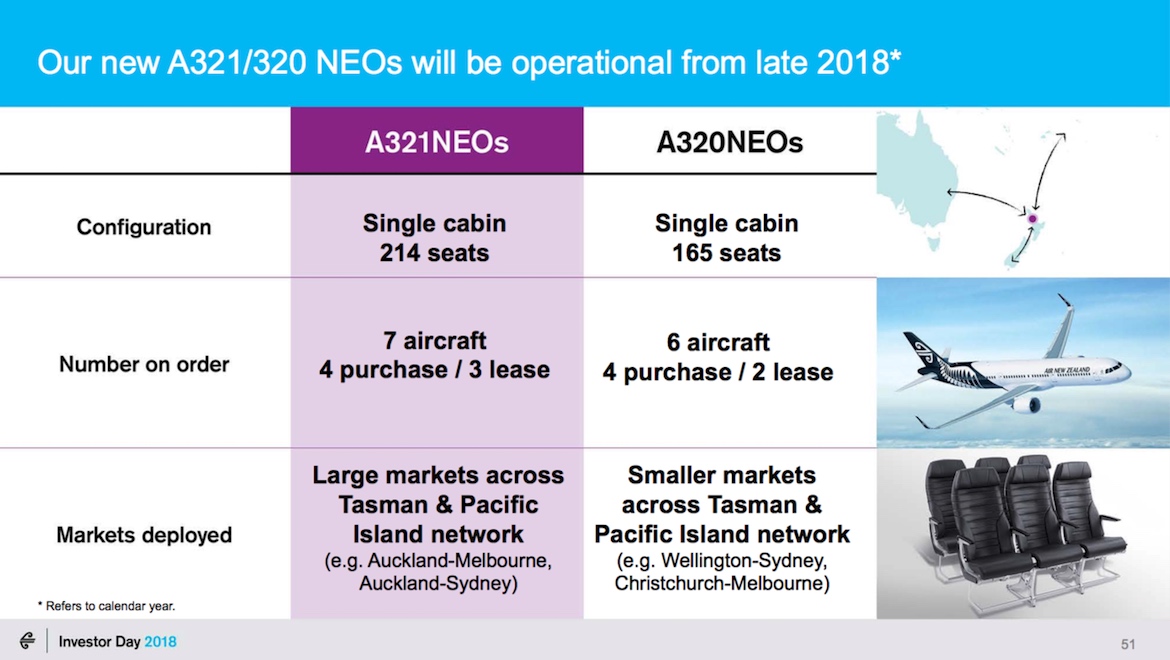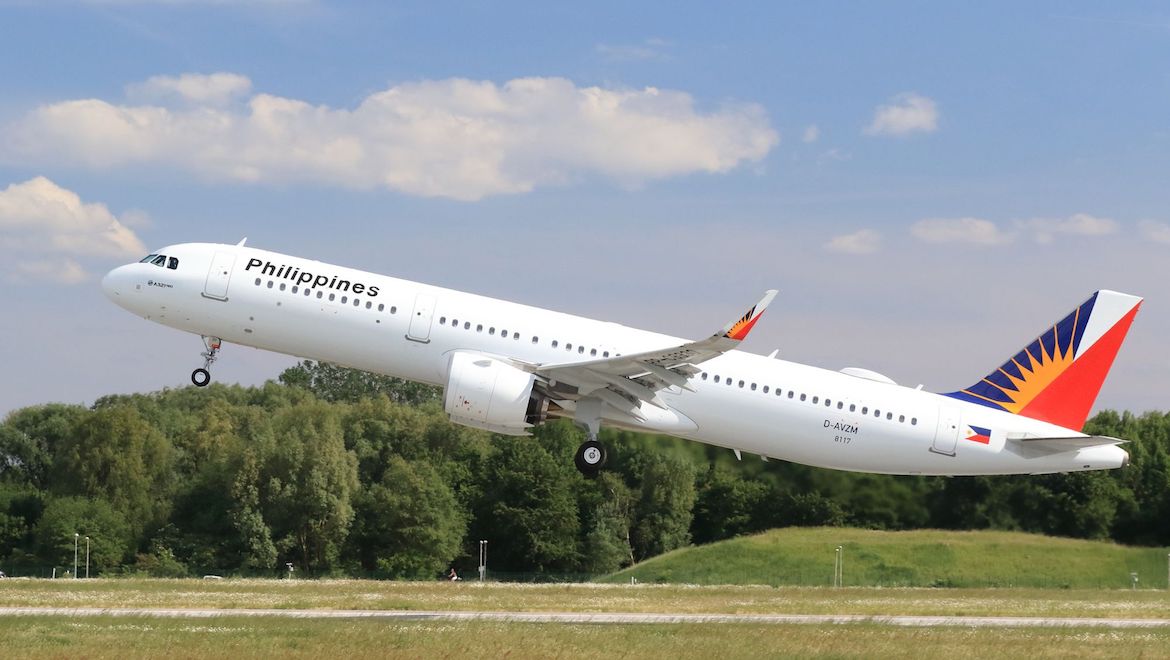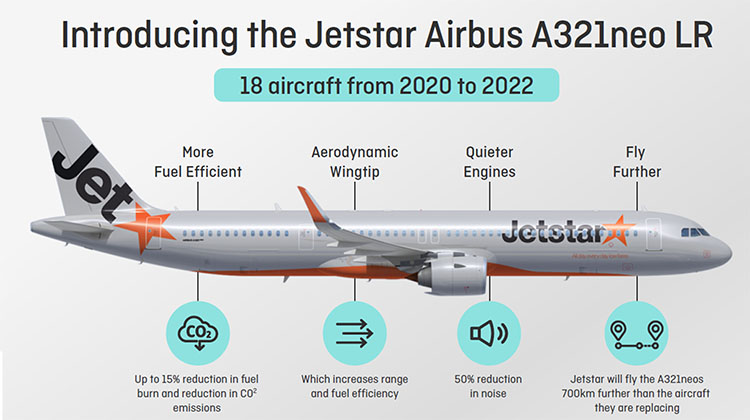
Airbus is considering enhancements to its A321neo LR narrowbody that would increase the fuel carrying capacity and add extra range to the aircraft, news reports says.
The Reuters news agency reported on June 18 the potential new aircraft had the working title A321XLR and would be of the same size as the existing A321neoLR.
The A321neo LR (or A321LR for short) began flight testing earlier in 2018. Entry-into-service and certification was expected before the end of calendar 2018.
The aircraft has a maximum takeoff weight of 97 tonnes – compared with 93.5 tonnes for the A321 – a maximum seating capacity of 244 passengers and a range of up to 4,000nm.
In a local context, that puts almost all of mainland Australia potentially within range from numerous cities in Asia such as Manila-Melbourne (3,397nm), Perth-Chennai (3,384nm), Singapore-Sydney (3,396nm) or Auckland-Denpasar (3,641nm).
Extending the range further would open up even more city pairs in this part of the world.

An Airbus spokesperson told Bloomberg the company the was “continuously looking at ways to advance our product line”.
Further, Airbus told Australian Aviation in a statement: “The A321 has tremendous potential. It enjoys a market share of some 80 per cent.”
“We are under no pressure. We do not comment on our product policy.”
As part of the 100-hour flight test program, the A321LR in March operated a nonstop flight from Mahe in the Seychelles islands to Toulouse, covering a total distance of 4,750nm in 11 hours.
In addition to the 16-member flight test crew, the cabin also included 162 “human heat-replicating dummy passengers”, Airbus said on April 11.
The A321neos also feature Airbus Cabin Flex (ACF), which allows a customised door configuration depending on the capacity requirements of the airline.
At its maximum 240-seat configuration, the A321neo ACF has three sets of standard doors (Doors 1 at the front of the aircraft, Doors 3 aft of the wing and Doors 4 at the rear) as well as two sets of over wing exit doors.
This compares with the four sets of standard doors on the current A321ceo/A321neo variants now flying.
Meanwhile, airline customers are able to order the aircraft with one or both sets of overwing exit doors deactivated, with four sets of standard doors or with Doors 3 deactivated, should they not require the full 240-seat capability of the A321neo ACF.
Airbus has said previously the A321neo ACF was available as an option today and would become standard for all A321neos around 2020.

Potential extra range for A321LR to counter Boeing’s potential 797?
News Airbus was studying further improvements to its largest-capacity narrowbody comes as Boeing continues to evaluate a much-discussed but yet‑to‑be‑launched new mid-market airplane (NMA) that some have labelled the 797.
The Boeing study was focused on a two-aircraft family that would carry between 225-275 passengers anywhere from 4,500-5,000nm. It would be powered by an engine capable of producing 50,000lb of thrust.
That puts the NMA somewhere between Boeing’s largest narrowbody the 737 MAX 10, (3,215nm range with 230 passengers in a single-class layout), and its smallest widebody the 787-8 (7,355nm range with 242 passengers in a two-class configuration).
Entry into service was projected to occur in the 2024 to 2025 timeframe.
Boeing’s initial estimates for the NMA suggested there might be a market for about 4,000 aircraft. Some aviation analysts, who might define the market differently, have put forward a number closer to 2,500.
Industry estimates suggested Airbus’s A321neo was outselling the 737 MAX 9 by a factor of five to one, figures which prompted Boeing to respond with the MAX 10, which is scheduled to enter service in 2020.
Air New Zealand and Jetstar to operate A321neos
Locally, Qantas announced in February it had ordered 18 A321LRs for its low-cost-carrier unit Jetstar, with the arrival of the first aircraft scheduled for 2020.
The A321LRs will first aircraft to be delivered from the Qantas Group’s longstanding order for 99 A320neo family aircraft, which will be powered by CFM LEAP 1-A engines.
Meanwhile, Air New Zealand was due to receive the first of seven A321neo aircraft on order later in 2018.
Its A321neos have 214 seats in a single-class configuration, an increase of 46 seats from the 168-seat A320ceos currently operating on the airline’s trans-Tasman and Pacific Islands services. The airline has chosen the Pratt and Whitney PW1100G engine for its A320neo and A321neo.

Tigerair Australia is also an A320 operator. However, the Virgin Australia-owned low-cost carrier is transitioning to the Boeing 737-800.

Philippine Airlines will be the first A321neo operator into Australia when it deploys the aircraft on its Brisbane-Manila nonstop service from early July, replacing the A340-300s used currently on the route. The A321neo will also be used on some Sydney-Manila flights during off-peak periods of the year.
In May, the Manila-based carrier took delivery of the first of 21 A321neo aircraft on order. Of those, six will be in a low-density configuration featuring 12 lie-flat business class seats and 154 economy class seats for a total of 166 seats and used for longer-range routes such as to Australia and India. The remainder will be in a higher density layout.
VIDEO: Philippine Airlines president Jaime Bautista talks about the airline’s use of the Airbus A321neo on for flights to Australia, India and elsewhere on the CAPA – Centre for Aviation website.
















